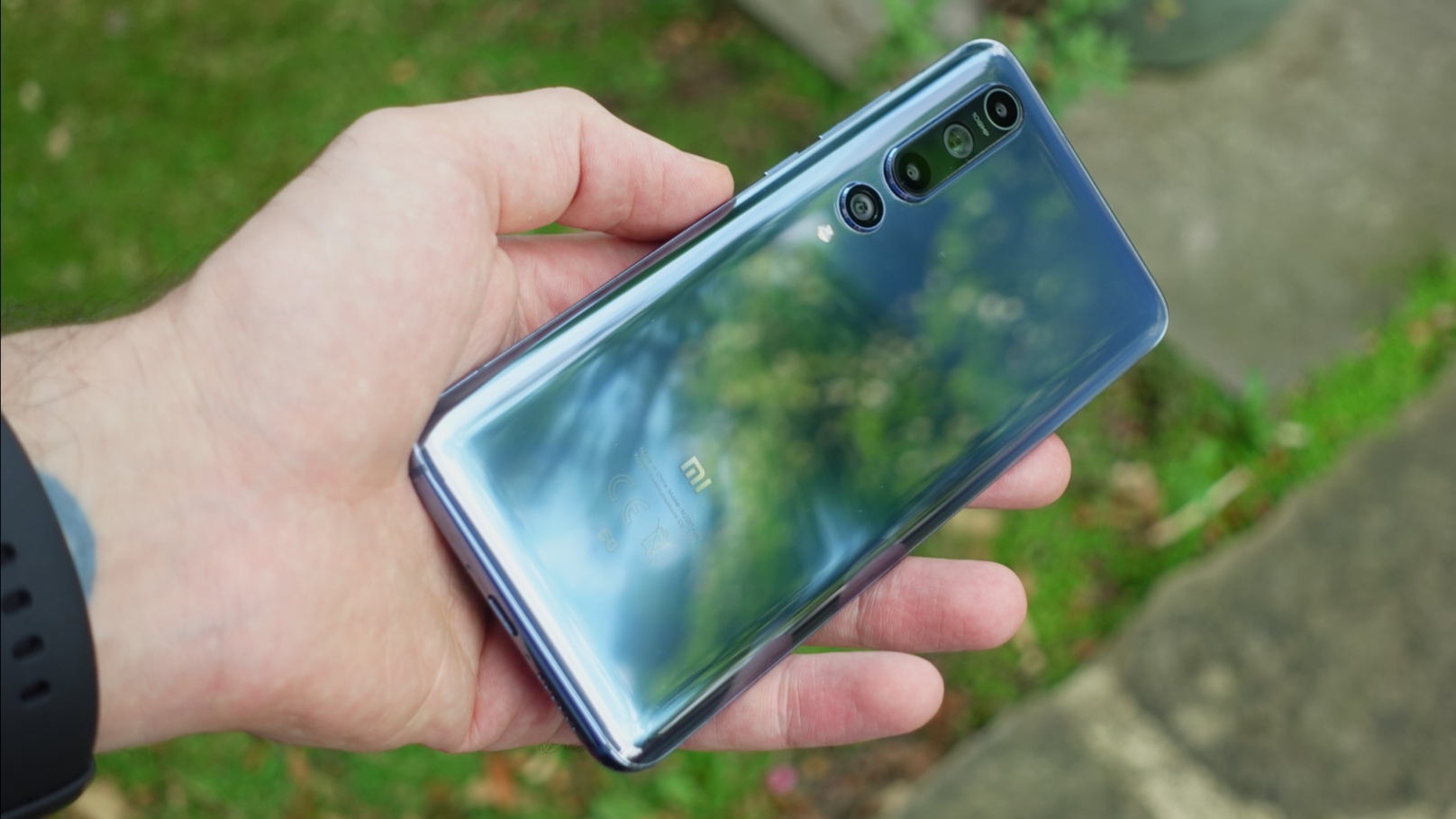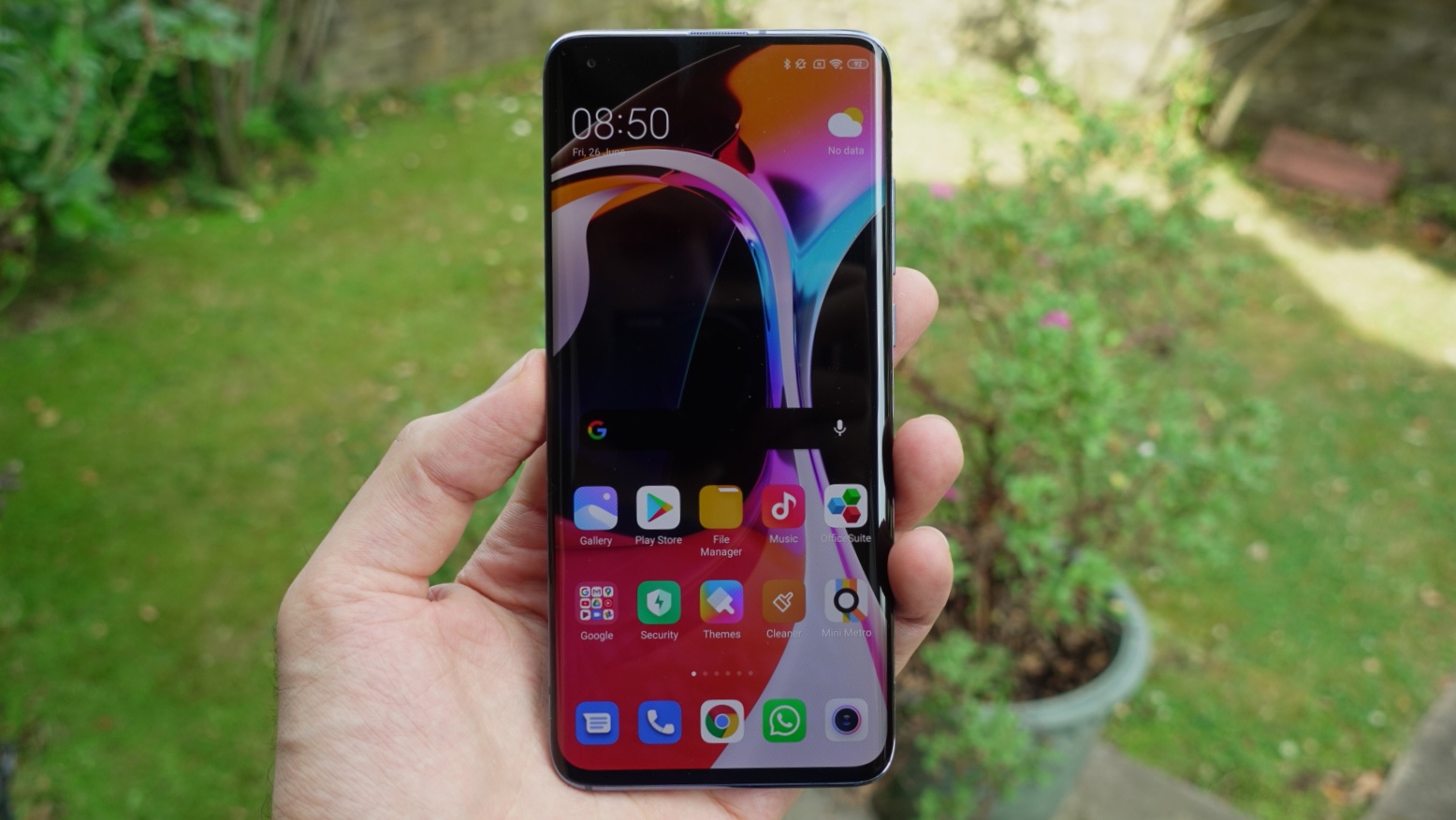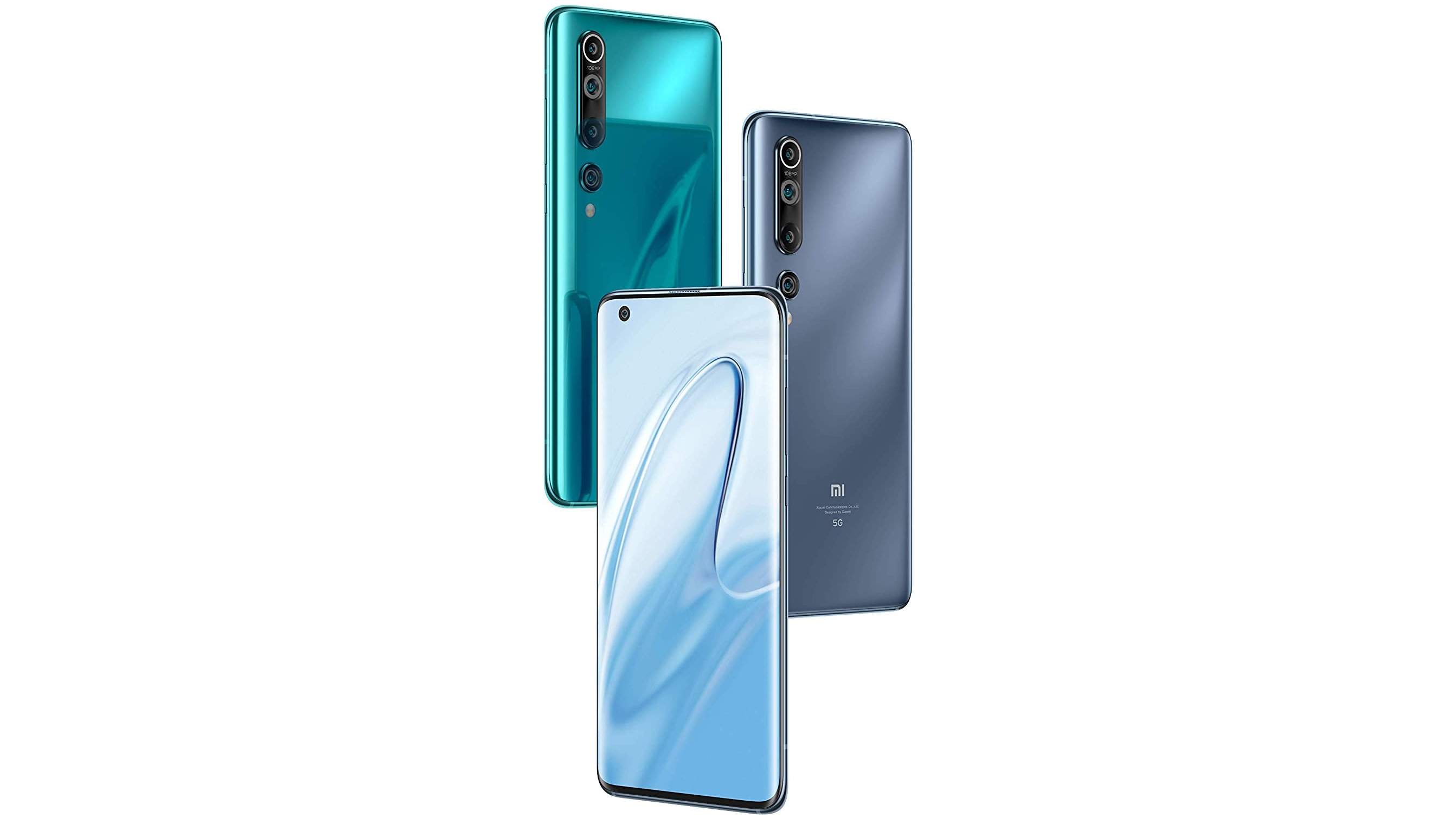Two-minute review
The Xiaomi Mi 10 is a great-looking phone. Shiny, curved glass around the back, a cool metal frame at the sides, and a bold, zingy, 90Hz screen on the front - what’s not to love? Not much, actually, at least when it comes to its design and screen. Xiaomi’s come a long way, and the Mi 10 series is its best-looking to date.
That said, its interface is still occasionally questionable. For example, it still doesn’t give you the option to activate an apps tray, and its virus scan feature interrupts whatever you’re doing every time an app installs, so the interfaces found on phones from the likes of OnePlus are more polished.
Jump to…
The Xiaomi Mi 10’s camera is also not quite as good as it could be, given the £799 / AU$1,699 (roughly $990) asking price. The main 108MP sensor is a solid performer - we’ve seen it do great things on the Samsung Galaxy S20 Ultra and the Xiaomi Mi Note 10.
That being said, it can’t quite stack up to the 50MP main camera on the Huawei P40 Pro, and more to the point, the phone misses out on the telephoto camera the Xiaomi Mi 10 Pro packs, falling behind phones like the OnePlus 8 Pro in terms of versatility.
What you do get with the Xiaomi Mi 10, however, is flagship power, a flagship screen, and seriously good sound from the stereo speakers, not to mention decent battery life, wireless charging, and 30W fast charging too, as well as 5G.
Later down the line, if you can find the Xiaomi Mi 10 at the right price, then it’s a great phone in a bubble. That said, when set aside other similarly priced devices, its camera and UI hold it back from excellence.
Xiaomi Mi 10 price and release date
- Out now in the UK and Australia
- Costs £799 / AU$1,699
The Xiaomi Mi 10 is available right now in the UK and Australia for £799 / AU$1,699 (roughly $1,000). It was announced in China in February alongside the Mi 10 Pro, a similar phone with a superior camera system.
Both phones have seen a staggered global launch and can be bought directly through Xiaomi’s online store, as well as third-party channels like Amazon.

Design
- Great fit and finish
- Metal frame and high-gloss glass back
- Available in Coral Green, Twilight Grey, and Peach Gold
There’s no doubt about it, the Xiaomi Mi 10 is a great-looking phone. The front is all-screen Gorilla Glass 5, curving elegantly into the metal frame, which rounds off beautifully to the curved glass back.
The Mi 10’s four rear cameras jut out from the otherwise uninterrupted back panel, and in-hand and to the eye, there’s absolutely nothing wrong with the Xiaomi Mi 10’s design, until you get your grubby fingerprints all over it - it holds onto them for dear life.
At 208g, it isn’t quite iPhone 11 Pro Max beefy (226g), but it’s still at the upper end of the smartphone weight spectrum.

Buttons are all on the right-side - power and volume rocker; at the base there's a USB-C port and at the top, an IR blaster.
The stereo speakers bookend the phone at the top and bottom, and the only warning we’d impart to potential buyers aside from the fingerprint-loving finish, is that the Mi 10 is big. If you’re after a small phone, look elsewhere.
Display
- Large 6.67-inch display
- AMOLED screen with punch-hole camera
- 1080 x 2340 resolution, 90Hz refresh rate
The Xiaomi Mi 10’s Super AMOLED screen packs a 1080 x 2340 resolution and measures 6.67 inches, making it a similar spec on paper to the Motorola Edge’s screen, albeit with a less dramatic curve. The specs translate to 386 pixel-per-inch clarity, which is better than an iPhone 11, but worse than an iPhone 11 Pro.
Being a Super AMOLED display, color pop and depth are abundant, whether gaming, watching, or just aimlessly swiping through the UI. It has a max manual brightness of about 500 nits - lower than the Samsung Galaxy S20, or OnePlus 8 Pro, but gets much brighter in auto mode, so is still easy to view indoors and out in all but the brightest conditions.
The Xiaomi Mi 10 screen’s HDR10+ accreditation means HDR movies look excellent, especially in darker environments, and viewing angles are great, especially for an OLED panel.

Camera
- 108MP, f/1.7 primary sensor
- 13MP, f/2.4 ultra-wide camera
- 2MP macro and depth sensors
- No telephoto option
The Xiaomi Mi Note 10 introduced Samsung’s 108MP camera sensor to the world and boy did it impress when it dropped. The huge-resolution sensor has since been reprised on the Motorola Edge Plus and Samsung Galaxy S20 Ultra, as well as the Xiaomi Mi 10 Pro - and it’s also leading the charge on the Mi 10.
What’s interesting about the Mi 10’s implementation of the 108MP camera sensor is that this is the first time we’re seeing it with no telephoto secondary camera.
Instead, Xiaomi’s banking on the big pixel numbers making digital zoom a viable alternative. Is it? In bright conditions, for the most part, yes, as you can see in the 2x zoom picture in the camera samples further down.
In low light, however, zooming is out of the question.
The Mi 10’s shooting modes are comprehensive: photo, video, portrait, night mode, pro mode - all the usual suspects are accounted for. There’s also a 108MP photo mode that delivers full-res images that look fantastically detailed in well-lit scenes.
Automatic mode on the Xiaomi Mi 10 is great. The phone packs optical image stabilization, so shots look at least sharpish across most lighting conditions, and capturing at 25MP by default, using 4-in-1 pixel combining (or pixel binning), detail is plentiful. That resolution translates to 4344 x 5792 photos by default, with each file size clocking in at around 7-10MB.

Compared to other cameras on the scene, the Mi 10 falls behind the P40-series when it comes to tonal and color nuance. The iPhone 11 manages to pull out better dynamic range, and the Pixel 4 clearly betters Xiaomi’s flagship when it comes to white balance, but we are nit-picking slightly for these comparisons.
Most people who buy the Xiaomi Mi 10 will love the camera. The huge sensor size delivers stacks of depth for a smartphone, and dynamic range is at least decent. Night mode, however, it's noticeably behind the aforementioned Apple, Google, and Huawei phones.
The 13MP f/2.4 ultra-wide camera’s performance is mediocre, with no autofocus resulting in middling utility. In all but the best lighting conditions, it’s also very soft, and compounding this fact is the odd decision to not make it accessible in night mode.
Luckily, you can shoot pro mode images with it, so can grab up to 30-second long shutter speed shots, giving it some versatility in low-light if you know what you’re doing.
The macro camera, which clocks in at 2MP is, honestly, a bit of a joke, as you can get higher-impact macro shots from the main camera across more lighting conditions, so we’re just going to skip over it.
As for the 20MP selfie camera, along with the 108MP main camera, this is a highlight, delivering decent performance across photo and video in all but the darkest lighting conditions.
Camera samples







Specs and performance
- Snapdragon 865 power
- Available in multiple configurations
- Up to 256GB of storage
The Xiaomi Mi 10 has a Snapdragon 865 chipset but is available in a couple of flavors, with 128GB or 256GB of storage. That said, in the UK and Australia, it’s shipping in its highest spec version as standard - 256GB of storage with 8GB of RAM for £799 and AU$1,699.
The result is a great phone for gaming, with top-tier flagship power, a gorgeous screen, and plenty of space for even the most monstrously massive titles.
Benchmarks are nothing short of stellar, with the phone achieving a Geekbench 5 multi-core score of over 3,300, and this is reflected in day-to-day use and gaming performance.
Xiaomi’s MIUI 11 interface is hit and miss. On the plus, it’s stable and looks clean, which is a good start. The experience falls behind when it comes to UI versatility - you can’t activate an apps tray for example. Additionally, when apps install in the background, the UI pulls you out of whatever you’re doing, taking you to a virus scanning screen. This results in a jarring user experience.
App support is excellent, though, and it does have some advantages when set aside phones from Huawei, given Xiaomi has access to the full gamut of Google services.
Connections on the Mi 10 are flagship across the board, with NFC and 5G. There’s no microSD card slot inside, but with 256GB of storage, there probably won’t be a need to bump up the phone’s capacity in your time with it.
The under-display fingerprint scanner is fine; it doesn’t work as well as some of the competition, but face unlock is quick to fire and does the job.

Battery life
- 4,780mAh battery
- Wireless and reverse wireless charging
- Fast 30W wired charging
The Xiaomi Mi 10’s big battery clocks in at 4,780mAh, which is very generous from a capacity point of view. Even with the screen refresh rate set to 90Hz, you’ll still get a full day out of it. The Mi 10 seamlessly switches between 60Hz and 90Hz depending on the app you’re using to ensure the mode doesn’t sap too much juice.
After 90 minutes of Full HD video played back at max brightness, the Mi 10 battery dropped by about 10%, and from flat, it charges up in around 70 minutes with 30W fast charging. The phone also supports wireless charging at up to 30W, which is incredibly impressive, and it offers 5W reverse wireless charging too.
Should I buy the Xiaomi Mi 10?

Buy it if...
You find it for a great price
The Xiaomi Mi 10 is a really competent phone. The things that hold it back are, for the most part, only noticeable when you set it side-by-side with other phones in its price range. In turn, if you find it at the right price - less than a OnePlus 8 Pro - you can confidently pick one up.
Gaming is a priority
With its Snapdragon 865 chipset, gorgeous screen, and decent speakers, not to mention the phone’s storage capacity of up to 256GB, if your priority is gaming, the Mi 10 is about as good as it gets.
You hate headphones and love streaming video
The Xiaomi Mi 10’s screen is a beauty, and those stereo speakers are loud with decent sound separation, so you can happily power through a couple of episodes of Brooklyn Nine-Nine without tinny, bad-speaker ear-bleeding.
Don't buy it if...
You love an app drawer
Xiaomi’s interface, MIUI, doesn’t give users the option to add an app drawer to the experience. While this is fine if you’re coming from an iPhone, most Android users will be used to not having to host all of their apps on their home screens.
You need a telephoto camera
The Mi 10’s camera is competent, provided you don’t need to zoom in too much, thanks to a 108MP main sensor and an impressive ultra-wide secondary camera. While we could take or leave the macro camera, if you can live without a telephoto option, the Mi 10 will suffice.
You want a small phone
The Xiaomi Mi 10 is a looker, with a big, bold screen, and glass and metal fused to look sleek, but small it ain’t with its 6.67-inch screen - small hands might want to pick up a Mi 9 SE.
First reviewed: June 2020
from TechRadar: Technology reviews https://ift.tt/3ikv4rQ

No comments:
Post a Comment